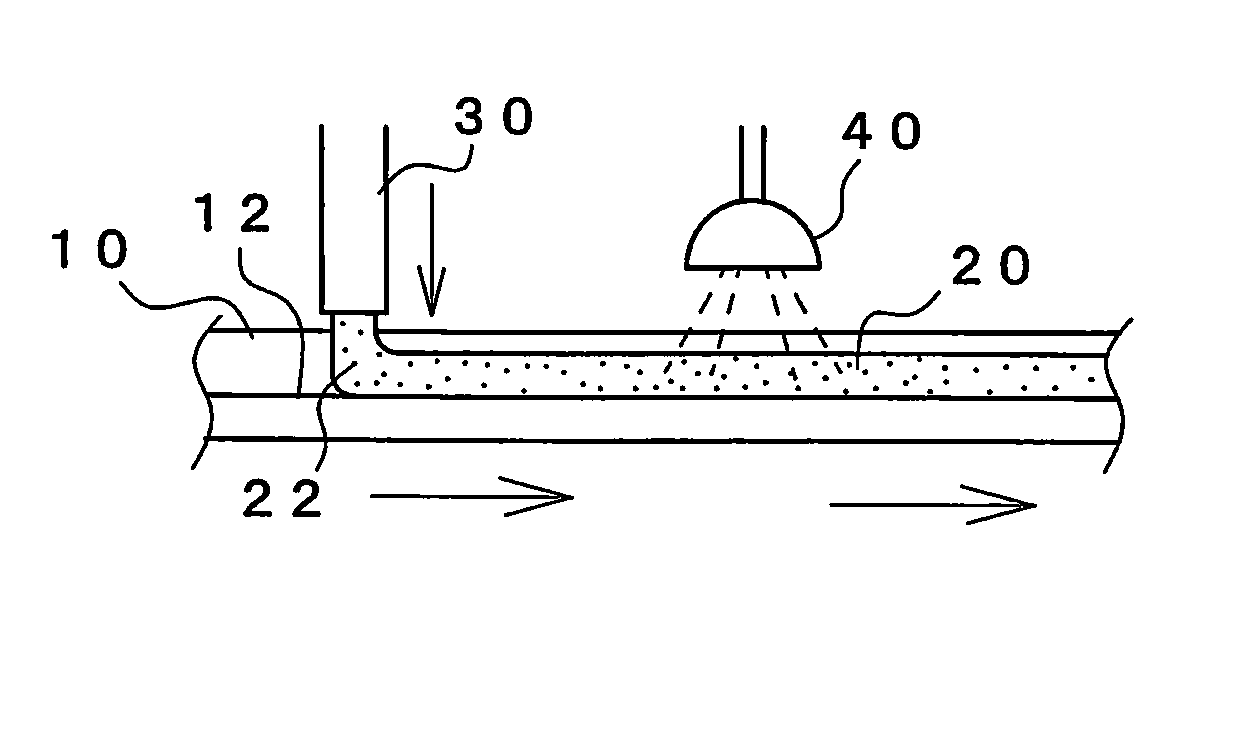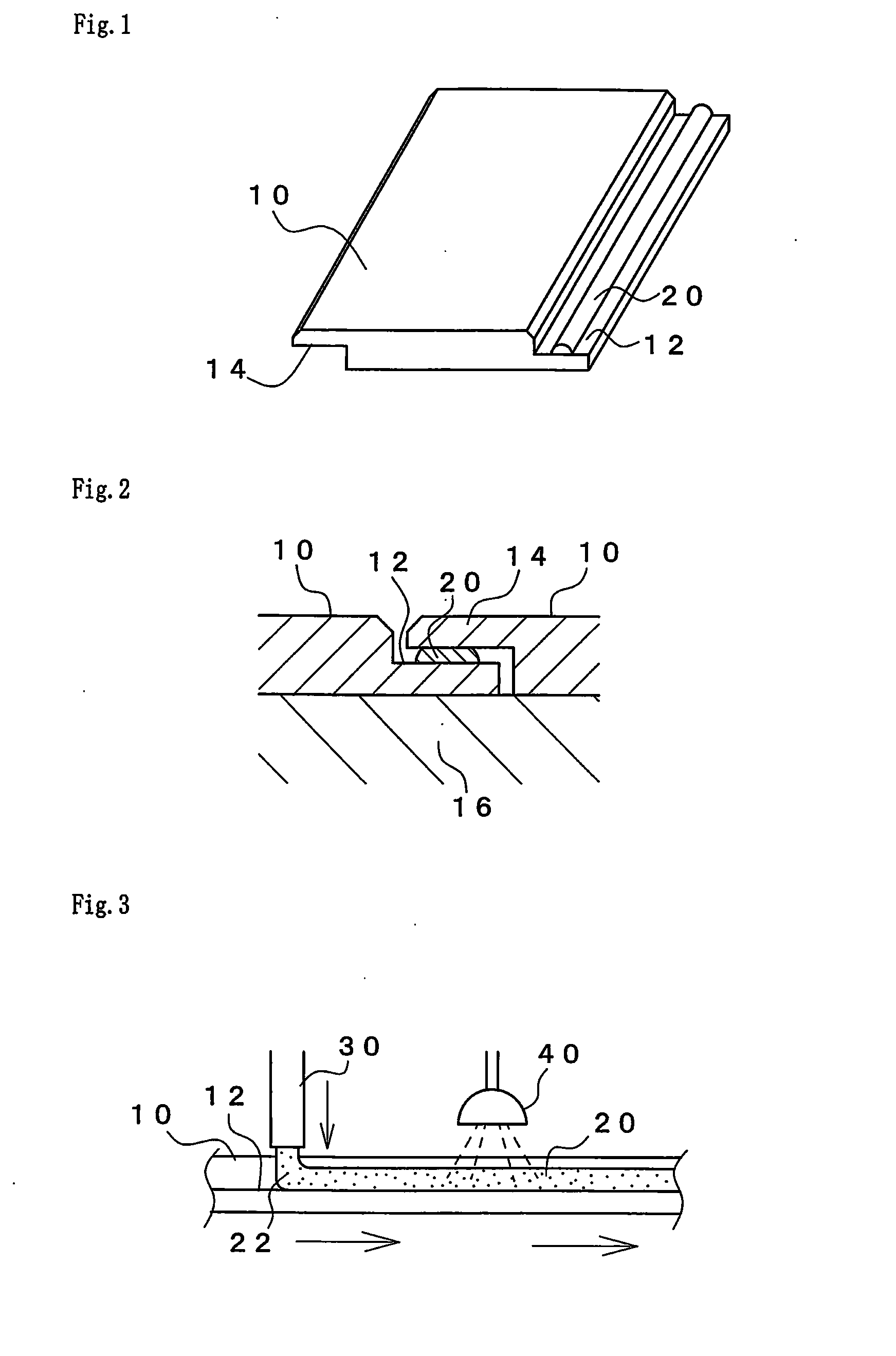Sealing material and method of foaming application thereof
a sealing material and foaming technology, applied in the field of sealing materials and foaming application methods, can solve the problems of composition flow before curing, foam breakage, foaming and curing, etc., and achieve the effects of good independent cells, low foam breakage, and high heat resistan
- Summary
- Abstract
- Description
- Claims
- Application Information
AI Technical Summary
Benefits of technology
Problems solved by technology
Method used
Image
Examples
working examples
[0155]Hereinafter, the present invention is more specifically illustrated by the following Examples of some preferred embodiments in comparison with Comparative Examples not according to the present invention. However, the present invention is not limited to these examples.
examples 1 to 7
, Comparative Examples 1 to 3
[0156]The ultraviolet-curable component and the ultraviolet polymerization initiator and further, optionally, the thermoplastic elastomer and the tackifier resin according to the composition formulations as shown in Table 1 below were stirred and mix-kneaded together to thereby prepare sealing materials of Examples 1 to 7 and Comparative Examples 1 to 3, and these sealing materials were measured for the melt-viscosity at 120° C. The results are shown in Table 1. Incidentally, the numerical values as to the formulations in Table 1 represent weight parts.
TABLE 1Compar-Compar-Compar-ativeativeativeExam-Exam-Exam-Exam-Exam-Exam-Exam-Exam-Exam-Exam-ple 1ple 2ple 3ple 4ple 5ple 6ple 7ple 1ple 2ple 3Ultraviolet-High-Tg acrylate A2540105curableHigh-Tg acrylate B2540componentLow-Tg acrylate C505050505550707550Low-Tg acrylate D2510251025202525Low-Tg acrylate E100Cationic-polymeriz-10able compound FCationic-polymeriz-10able compound GUltravioletRadical polymeriza-3...
PUM
| Property | Measurement | Unit |
|---|---|---|
| pressure | aaaaa | aaaaa |
| discharging pressure | aaaaa | aaaaa |
| glass transition temperature | aaaaa | aaaaa |
Abstract
Description
Claims
Application Information
 Login to View More
Login to View More - R&D
- Intellectual Property
- Life Sciences
- Materials
- Tech Scout
- Unparalleled Data Quality
- Higher Quality Content
- 60% Fewer Hallucinations
Browse by: Latest US Patents, China's latest patents, Technical Efficacy Thesaurus, Application Domain, Technology Topic, Popular Technical Reports.
© 2025 PatSnap. All rights reserved.Legal|Privacy policy|Modern Slavery Act Transparency Statement|Sitemap|About US| Contact US: help@patsnap.com


